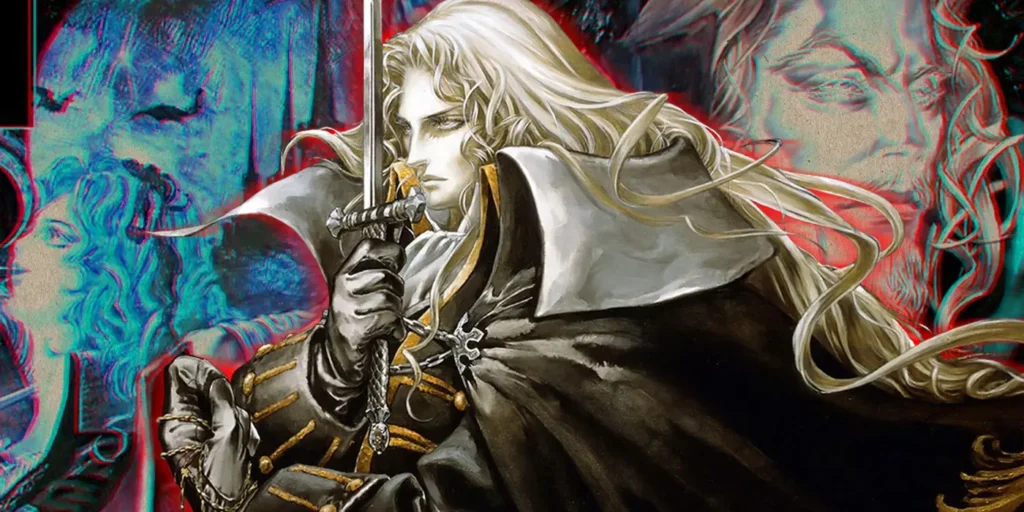Castlevania: Symphony of the Night APK
Description
Introduction
In the realm of video games, few titles have achieved the legendary status of Castlevania: Symphony of the Night. Released in 1997 by Konami, this iconic game revolutionized the action-adventure genre and left an indelible mark on gamers around the world. Prepare to embark on a journey through the dark and atmospheric universe of Castlevania: In Symphony of the Night, you will engage in grand battles, explore meticulously crafted levels, and be captivated by a storyline that will hold your attention from beginning to end.

Castlevania: Symphony of the Night – Unveiling the Classic
Castlevania: Symphony of the Night, often abbreviated as SOTN, is a 2D action-adventure game that combines elements of platforming, role-playing, and exploration. Set in a gothic castle teeming with supernatural creatures, the game follows the story of Alucard, the half-human, half-vampire son of Dracula. With its non-linear gameplay, intricate map design, and captivating narrative, SOTN stands as a testament to the creativity and innovation of its developers.
Exploring the Enigmatic Castle
Step into the shoes of Alucard as he navigates the labyrinthine corridors and chambers of Dracula’s castle. From the eerie catacombs to the majestic clock tower, each area is meticulously crafted, offering a unique visual experience. The use of dynamic lighting and intricate sprite work adds to the game’s immersive atmosphere, enveloping players in a world that is as haunting as it is beautiful.
Unleash Your Inner Hunter
As Alucard, you’ll face off against a myriad of supernatural foes, each with its own attack patterns and weaknesses. Utilize Alucard’s wide array of weaponry, from swords to magical spells, to defeat enemies and bosses alike. The game’s combat system is fluid and responsive, making every encounter a thrilling test of skill.
RPG Elements – Leveling Up and Customization
Castlevania: Symphony of the Night introduces RPG elements that add depth and complexity to the gameplay. As you defeat enemies, you’ll earn experience points that contribute to Alucard’s growth. Customize his abilities and attributes to suit your playstyle, whether you prefer brute strength or agile finesse. This level of customization enhances the sense of progression and investment in the character.
Secrets and Exploration
One of the game’s defining features is its emphasis on exploration and discovery. Hidden rooms, secret passages, and unexpected surprises await those who delve deeper into the castle’s mysteries. Players are rewarded for their curiosity with powerful weapons, relics, and upgrades that enhance Alucard’s capabilities.
The Reimagining of Dracula’s Castle
Castlevania: Symphony of the Night takes a bold step by departing from the linear level structure of its predecessors. Instead, the game presents an interconnected world that players can explore at their own pace. This innovative design choice challenges players to think critically, solve puzzles, and uncover the castle’s hidden secrets.
Musical Brilliance
No discussion of Castlevania: Symphony of the Night would be complete without mentioning its iconic soundtrack. Composed by Michiru Yamane, the game’s music sets the tone for each area and encounter, enhancing the overall atmosphere. From haunting melodies to adrenaline-pumping tracks, the music of SOTN is a masterpiece in its own right.
Some Pros and Cons
Pros of Castlevania: Symphony of the Night
- Innovative Gameplay: SOTN introduced a groundbreaking non-linear exploration concept, setting the stage for the “Metroidvania” subgenre. Players can freely navigate the expansive castle, uncovering hidden secrets and backtracking to previously inaccessible areas.
- Rich Storytelling: The game weaves a captivating narrative through its well-developed characters and engrossing dialogue. It effectively combines action and storytelling, immersing players in the struggle against Dracula’s forces.
- Atmospheric Design: The gothic atmosphere of Dracula’s castle is beautifully realized through detailed sprite work and dynamic lighting. Each area exudes a distinct ambiance, enhancing the overall immersion and creating a hauntingly memorable experience.
- RPG Elements: SOTN successfully integrates RPG elements, allowing players to level up Alucard, customize his abilities, and choose from a diverse arsenal of weapons and spells. This adds depth and strategy to the gameplay, catering to various playstyles.
- Iconic Soundtrack: The game’s music, composed by Michiru Yamane, is a masterpiece that complements the visuals and enhances the emotional impact of each scene. Memorable tracks contribute to the overall ambiance and immersion.
- Multiple Endings: SOTN offers multiple endings, encouraging replayability as players strive to uncover different outcomes based on their choices and achievements throughout the game.
Cons of Castlevania: Symphony of the Night
- Backtracking Pacing: While backtracking is a core mechanic, it can sometimes lead to pacing issues, as revisiting previous areas might feel repetitive and slow down the momentum of the game.
- Limited Voice Acting: While the game features voice acting, it is relatively limited in scope and can sometimes feel disconnected from the emotional weight of the story.
- Map Navigation: Navigating the expansive castle can be confusing at times, as the in-game map lacks detailed markers and guidance, potentially leading to aimless wandering.
- Limited Character Playability: Despite the introduction of Richter Belmont as a playable character, the options for diverse gameplay experiences are relatively limited, and players are mostly confined to Alucard’s abilities.
Alternatives
- Bloodstained: Ritual of the Night: This game is often considered a spiritual successor to Castlevania: Symphony of the Night, as it was created by Koji Igarashi, the same director who worked on the original Castlevania games. It features a similar Metroidvania style with exploration, RPG elements, and a gothic atmosphere.
- Hollow Knight: This critically acclaimed game is known for its beautiful hand-drawn art style, challenging gameplay, and expansive interconnected world. It offers a rich atmosphere and a deep lore to uncover.
- Dead Cells: While Dead Cells has more of a focus on procedural generation and roguelike elements, it still captures the exploration and combat aspects of Symphony of the Night. It’s a fast-paced action game with a wide variety of weapons and abilities.
- Momodora: Reverie Under the Moonlight: Momodora offers a smaller-scale Metroidvania experience with tight controls, challenging combat, and a charming pixel art style.
- Valdis Story: Abyssal City: Valdis Story features intricate combat mechanics, a variety of playable characters, and a detailed world to explore. It offers a mix of action RPG elements and Metroidvania gameplay.
Conclusion
Castlevania: Symphony of the Night remains a timeless masterpiece that has left an indelible mark on the gaming world. Its innovative design, atmospheric visuals, captivating narrative, and memorable soundtrack continue to captivate players, making it a must-play for both longtime fans and newcomers to the series. Immerse yourself in the dark and enchanting world of Castlevania: Symphony of the Night, and prepare to embark on an unforgettable gothic adventure.
FAQs
Is Castlevania: Symphony of the Night a direct sequel?
While SOTN continues the Castlevania series, it diverges from the traditional formula by introducing non-linear gameplay and RPG elements, making it a unique entry in the franchise.
Are there multiple endings in the game?
Yes, Castlevania: Symphony of the Night features multiple endings based on different conditions and choices made by the player throughout the game.
Does the game have a New Game Plus mode?
Absolutely, once you’ve completed the game, you can start a new playthrough with enhanced abilities and challenges, adding to the game’s replay value.
How does Castlevania: Symphony of the Night continue to influence gaming today?
The game’s innovative design, non-linear exploration, and RPG elements have inspired numerous titles in the “Metroidvania” subgenre, where exploration and character progression are central gameplay mechanics.














